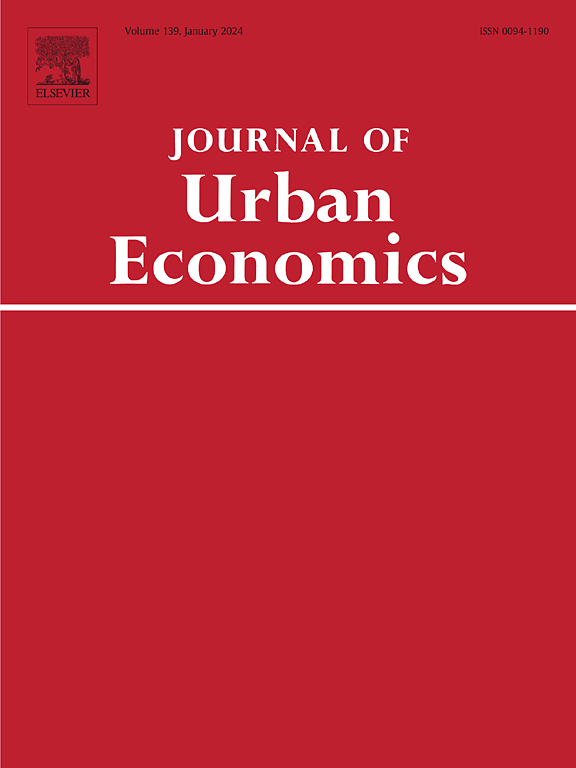A better delineation of U.S. metropolitan areas
IF 4.8
1区 经济学
Q1 ECONOMICS
引用次数: 0
Abstract
Metropolitan areas are a fundamental unit of economic analysis. Broadly defined, they are unions of built-up locations near each other among which people travel between places of residence, employment, and consumption. Despite the importance of metropolitan areas, metropolitan Core-Based Statistical Areas and other official U.S. delineations considerably stray from this broad definition. We develop a simple algorithm to better match it, using commuting flows among U.S. census tracts in 2000. Three judgmental parameters govern the threshold strength of commuting ties between locations to include them in the same metropolitan area, the maximum separating distance between locations, and the threshold density of outlying settlement. A parameterization that balances encompassing commuting flows and excluding sparsely settled land delineates 361 Kernel-Based Metropolitan Areas (KBMAs), in aggregate capturing almost all the population and employment of metropolitan CBSAs in a small fraction of their land area. We benchmark KBMAs against two alternative parameterizations, one that prioritizes encompassing commuting flows and one that prioritizes excluding less built-up and less near locations.
更好地划分美国大都市地区
大都市区是经济分析的基本单位。从广义上讲,城市是人们在居住地、就业地和消费地之间旅行的相互靠近的已建成地点的联合体。尽管大都市区很重要,但基于大都市区核心的统计区域和其他美国官方划定的范围在很大程度上偏离了这一宽泛的定义。我们开发了一个简单的算法来更好地匹配它,使用2000年美国人口普查区的通勤流量。三个判断参数决定了地点之间通勤联系的阈值强度,包括它们在同一大都市区,地点之间的最大分隔距离和外围聚落的阈值密度。一个平衡通勤流量和不包括稀疏定居土地的参数化划分了361个基于内核的大都市地区(kbma),总的来说,大都市cbsa在其土地面积的一小部分中捕获了几乎所有的人口和就业。我们针对两种可选参数化对kbma进行基准测试,其中一种优先考虑通勤流,另一种优先考虑排除较少建筑和较少靠近的位置。
本文章由计算机程序翻译,如有差异,请以英文原文为准。
求助全文
约1分钟内获得全文
求助全文
来源期刊

Journal of Urban Economics
Multiple-
CiteScore
10.60
自引率
4.80%
发文量
64
期刊介绍:
The Journal of Urban Economics provides a focal point for the publication of research papers in the rapidly expanding field of urban economics. It publishes papers of great scholarly merit on a wide range of topics and employing a wide range of approaches to urban economics. The Journal welcomes papers that are theoretical or empirical, positive or normative. Although the Journal is not intended to be multidisciplinary, papers by noneconomists are welcome if they are of interest to economists. Brief Notes are also published if they lie within the purview of the Journal and if they contain new information, comment on published work, or new theoretical suggestions.
 求助内容:
求助内容: 应助结果提醒方式:
应助结果提醒方式:


